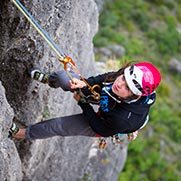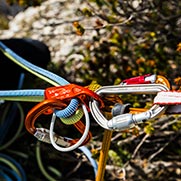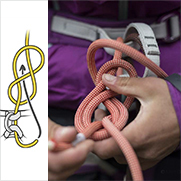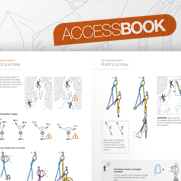Knots
How to tie knots? Explanatory diagrams.
Warnings
- Carefully read the Instructions for Use used in this technical advice before consulting the advice itself. You must have already read and understood the information in the Instructions for Use to be able to understand this supplementary information.
- Mastering these techniques requires specific training. Work with a professional to confirm your ability to perform these techniques safely and independently before attempting them unsupervised.
- We provide examples of techniques related to your activity. There may be others that we do not describe here.
Figure-eight knot
For tying in
Figure-eight knot
For the anchor
Flat overhand bend
For joining two ropes
Bowline knot with backup knot
Easier to untie than the figure 8 knot
WARNING: backup knot mandatory (e.g. with a double overhand knot)
Clove hitch
Rapid-adjust anchor knot
Munter hitch
Friction hitch, does not lock the rope
Double knots
Used to equalize anchors when installing a fixed vertical line or traverse line.
The bowline on a bight can be easier to undo after significant loading.
Bunny
Bowline on a bight
Butterfly knot
One of the few knots that minimizes rope strength loss, this knot may be used to isolate a damaged section of rope.
Butterfly knot
It can also be used to equalize two widely separated anchors in conjunction with a figure 8 knot.









